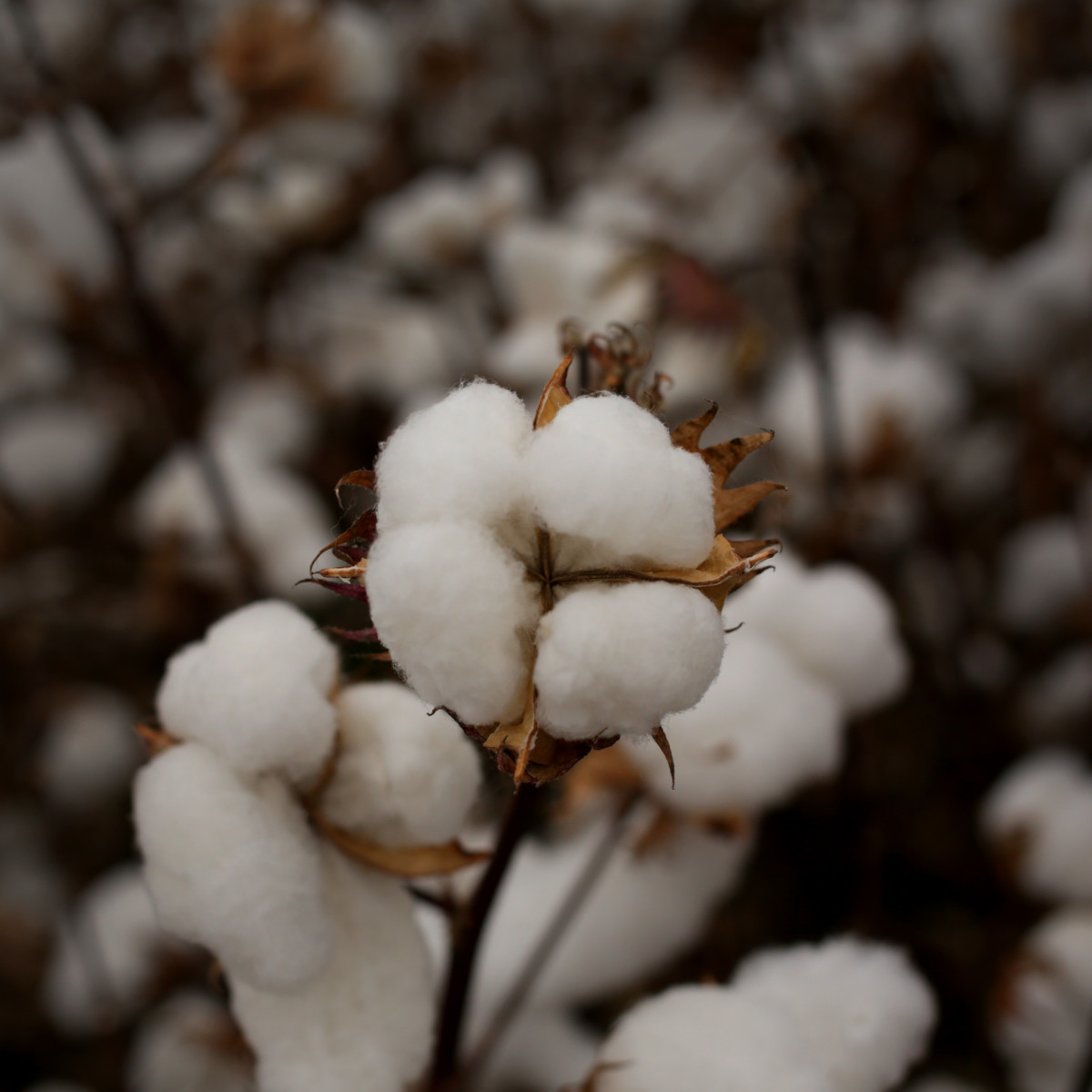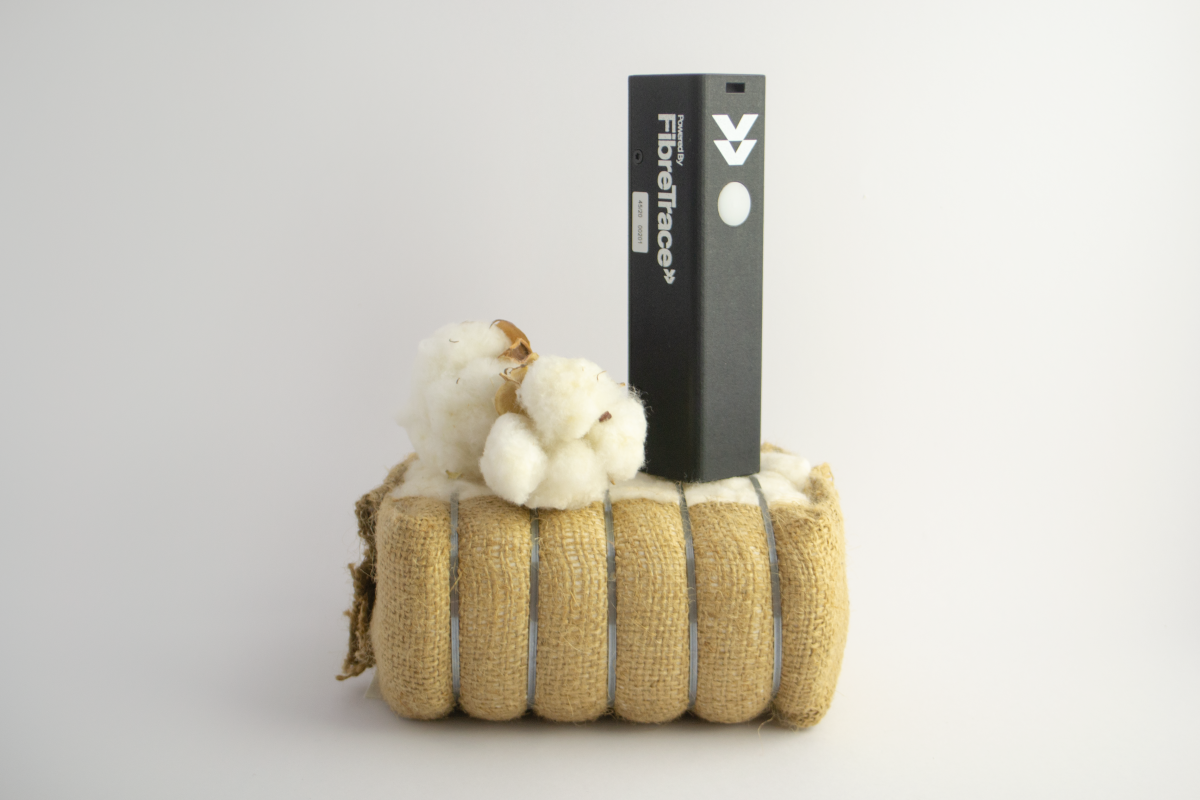When Danielle Statham was a fashion student, she dreamed of starting her own label. Then she met and married a cotton farmer, and her dream grew: Now she wanted her own label, made using her own cotton.
It seemed simple, but that dream proved surprisingly hard to realize.
Danielle and her husband David owned a collection of farms under the name Sundown Pastoral Company in Australia, where they sowed and harvested their own cotton and had storage and ginning facilities on site. But once they sent their fibers off to a spinning mill, there was no way to guarantee their fibers wouldn't be blended with someone else's before being sent back — and since Australian fiber is known for its quality, their fibers were often blended with lower-quality fibers so the mill could keep costs down.
Statham and her husband were investing heavily in creating the most environmentally friendly cotton they could, and they wanted to be able to create fabric that reflected that ethos through and through. So the blending with cotton from unknown sources represented a problem.
At first, Statham thought this might be solved by building a spinning mill on the property, since those don't really exist in Australia anymore. But that dream had to be abandoned when she realized that such a project would cost "a hundred million dollars or something along those lines."
Related ArticlesHow Claire Bergkamp Became One of the Most Quietly Influential Figures in SustainabilityFarmers, Foragers and Homesteaders Are the New Fashion InfluencersIt's Time To Stop Looking To Brands To Save Us
But Statham still couldn't drop it. "I just needed to know that it was going to be my yarn that was coming back, and that was all it was," she says. Her desperation led to her emailing the International Cotton Association to ask if anyone had developed any kind of technology or process that might help with true traceability.
That's how she met Paul Stenning. Stenning is a scientist who had previously developed anti-counterfeiting technology used in paper money. (If you've ever seen a storekeeper put a bill under a special light to check if it's legit, you've encountered the fruits of his labor.) He had more recently turned his attention to the apparel industry, having been asked by the International Cotton Association to fuse his technology with fibers in a manner that could withstand all the processes involved in making clothing.

After years of trying, he succeeded. Hearing this, Statham promptly flew to Germany to meet him, bought the proprietary technology he had created, then invited him to continue research and development in that vein with her backing. Thus, Fibretrace was born: a company designed to expand Statham's dream of ultra-traceable fibers to the whole fashion industry.
By the time Fibretrace got off the ground in 2018, Statham's desire to get this technology into the hands of the industry's biggest players had eclipsed any former dream about her own label. She co-founded the company with her husband and Sanjeev Bahl, best known for creating the Saitex denim factory in Vietnam. The goal was to bring together a team with different areas of expertise to create a truly comprehensive supply chain solution that would solve a need for brands of all sizes.
"I saw the pledges these big fashion houses were making saying they would only source 'sustainable fibers' — whatever the meaning of that is — by 2023," she says. "I was just aghast, thinking, 'I can't even guarantee this for myself when I grow the cotton!' Most of them don't even know their manufacturer, let alone where their fiber comes from."
But Fibretrace could help change that. The technology developed by Stenning embeds a bioluminescent pigment in fibers that can survive the entire production process, all the way to recycling. Those pigments can be configured into specific "recipes" that correspond to different companies or different batches. These unique "recipes" allow the pigments to be scanned using a special scanner, and can pull up information associated with the batch just like a barcode scanner at the supermarket pulls up the price of your bunch of bananas.

What this allows Fibretrace to do is add information securely via blockchain about a batch of fiber at any point in the supply chain. Once a garment is finished and hanging in the store, a scan can reveal any information that's been stored along the way, from the fields the cotton was farmed in down to the particular sewist who stitched your garment, if a company chooses to get that granular. And since this information is embedded in the fibers itself — you literally scan the cloth to view it — removing tags doesn't obscure the provenance of the garment. It can even reveal surreptitious blending, says Statham, allowing for better protection for the farmers of particularly high-quality fibers.
Because the pigment in question is made of ceramic, it's extremely durable, only melting at 1700 degrees Celsius, according to an email from Stenning. But unlike some hard-to-destroy materials or chemicals, Statham says, the pigment contains no hidden health costs for the planet or people. It's harvested through an evaporation process ("like salt") rather than mined by digging into the earth, and "it's classified as an edible product," making it safe to wear against one's skin. Plus, Statham notes, it doesn't take much to get the job done — a bale of cotton only needs to contain between 0.01-0.05% of the pigment for Fibretrace technology to work.
Though Statham is a self-described "soil nerd" who is deeply invested in regenerative farming practices on her own land, helping other brands achieve this level of extreme traceability and transparency doesn't guarantee they'll share her commitment to earth-friendly practices. But so far, the companies that have shown the most interest in the technology do — Fibertrace launched its first brand collaboration last year with Nobody Denim, an Australian label that focuses on ethical manufacturing. Another partnership, with a U.S. brand that has long "focused on impact data," is coming next month.
Fibretrace is still in its early stages, but Statham already has big dreams of it being so widely adopted that employing Fibretrace technology becomes the norm for brands of all sizes.
"We want to make a difference and actually do something to help the industry, because we're in the industry, and we understand it," she says. "We need to be able to give truthful answers about the supply chain."
Homepage photo: Courtesy of Fibretrace
Stay current on the latest trends, news and people shaping the fashion industry. Sign up for our daily newsletter.




Comments
Post a Comment